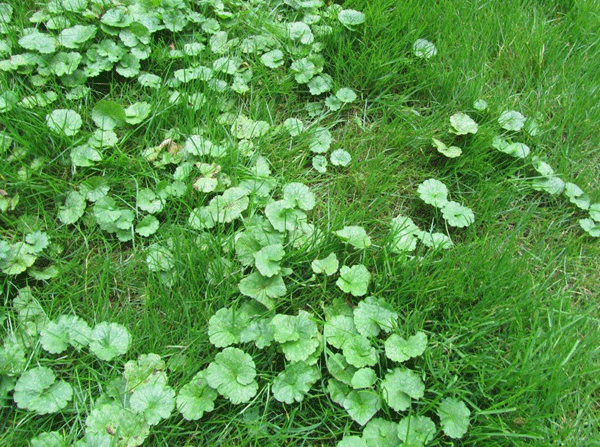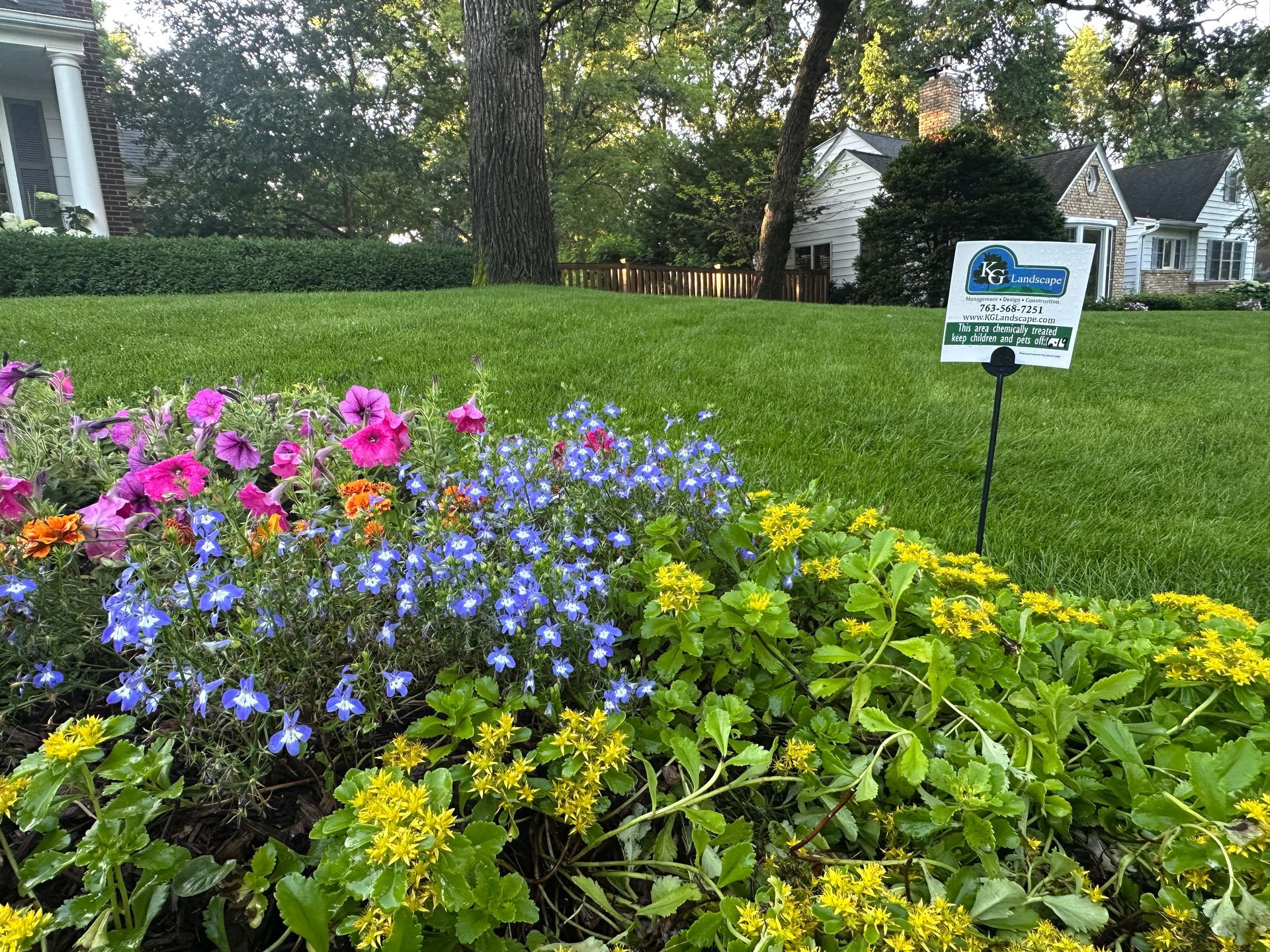Weed Control Programs That Keep Medina Lawns Clean
Weed Control Programs
You can tell a lot about a lawn by the weeds growing in it. When I walk up to a yard in Medina and see dandelions, crabgrass, or clover popping up, I don’t just see weeds. I see what the soil is trying to tell me. Around here, weeds are almost always a sign that the ground beneath is struggling — compacted, low on nutrients, or so heavy with clay that roots can’t breathe.
A lot of homeowners think weed control means spraying something on top. That might give you a quick win, but it doesn’t solve the real problem. Weeds are symptoms, not the disease. If you want a lawn that stays thick and green year after year, you have to fix what’s happening under the surface.
This is what I focus on: building lawns that naturally resist weeds by improving soil health. Through aeration, overseeding, topdressing, and a balanced maintenance program, you end up with a thick, resilient lawn that simply leaves no room for weeds to grow.
What Weeds Reveal About Your Lawn’s Health
Different weeds tell different stories. Dandelions, for example, love compacted soil. Their deep taproots dig into the tight clay to pull up whatever nutrients they can find. Crabgrass thrives in hot, bare spots where good turf can’t compete. Clover often shows up in lawns low in nitrogen. If you look closely, the plants will tell you exactly what your soil is missing.
In Medina, we deal with heavy clay soil almost everywhere. It holds water like a sponge but dries out and cracks hard when it gets hot. This cycle creates tough conditions for turfgrass and perfect ones for weeds. That’s why chemical weed treatments, by themselves, never last long here. You can burn off what’s on the surface, but the moment conditions stay unfavorable underneath, those weeds come right back.
When I see a lawn full of weeds, I’m not thinking about herbicides first. I’m thinking about oxygen, drainage, and structure. Healthy grass roots need air, nutrients, and water movement through the soil profile. If the lawn can’t breathe, weeds move in to take advantage.
I often tell clients, “If you fix the soil, you fix the weeds.” The two are inseparable. Every effective weed control plan we design in Medina starts with improving soil health.
In neighborhoods like Bridgewater, Medina Morningside, and Holy Name Lake, you’ll find lawns on thick subsoil that’s been compacted by construction equipment. Those are prime candidates for aeration and topdressing. The goal isn’t just to get rid of weeds, but to build a foundation that can grow healthy grass for the long haul.

Aeration and Overseeding — The Foundation of a Healthy Lawn
When lawns get compacted, the roots can’t push through, and the top few inches turn into something like a brick. That’s when aeration becomes essential. Core aeration pulls out small plugs of soil, opening channels that allow water and air to move freely again.
After that, overseeding is what fills in the gaps. When you spread high-quality seed immediately after aeration, those holes create perfect seedbeds. The new grass grows thick, covers bare patches, and increases root competition. The thicker the lawn, the fewer opportunities weeds have to take hold.
I like to say, “If the lawn’s thin, the weeds win.” It’s simple and true.
The timing matters too. In Medina, early fall is ideal for aeration and overseeding. The soil is still warm enough for germination, and there’s usually enough rain to keep things moist without scorching the new grass. Plus, weeds start slowing down while the cool-season turf is hitting its stride.
This combination also complements other services. For instance, if you’re planning to topdress afterward, aeration makes it more effective by letting that new layer integrate deeper into the soil.
We use specialized equipment that ensures even coverage and consistent plug depth. A lot of companies “eyeball” their passes, but we work in a grid pattern to make sure every area of the lawn gets the same treatment.
Topdressing and Soil Structure — The Secret Weapon
After aeration, the best thing you can do for your lawn is topdress with the right blend of soil. I use a sandy topsoil mix that smooths out bumps, improves drainage, and firms up the surface so it’s more pleasant to walk on.
Topdressing does more than make a lawn look nice. It improves the biology of the soil. Medina’s clay soil tends to trap water and suffocate roots. When you add a thin layer of sandy topsoil, it gradually changes how water moves through the profile. Over time, you get a more balanced structure — not so tight that it compacts, not so loose that it dries out.
This process also improves how well grass seed germinates. The fine texture of the topdressing material helps retain moisture around new seeds while keeping them in contact with the soil. That means better sprouting rates and faster establishment.
I always explain to homeowners that topdressing isn’t a one-and-done service. It’s like training your soil. Each application builds on the last. After two or three years of consistent aeration and topdressing, you’ll see a noticeable difference — smoother, firmer, and far fewer weeds.
We don’t just topdress to make lawns look better; we do it to help the soil breathe. Once the lawn starts breathing, it starts thriving.
Integrated Weed Control Programs — Building Long-Term Resilience
When people call me asking for weed control, what they usually want is a shortcut — something fast. I understand that, but if you want results that last, there’s no single product or spray that can do what a balanced soil improvement program can.
We do use selective herbicides when needed, but that’s just one piece of the puzzle. The real goal is to make the lawn strong enough to outcompete the weeds on its own.
That’s where a complete program comes in: aeration, overseeding, topdressing, fertilization, and seasonal adjustments. Each one plays a role. Aeration improves air exchange. Overseeding increases density.
Topdressing refines the structure. Fertilization feeds the roots. Together, these create a lawn ecosystem that keeps itself clean.
We also look at the drainage situation in every Medina property before finalizing a plan. Lawns that hold water too long create bare patches and stress grass roots, which are both invitations for weeds. We often combine these programs with drainage improvements if the soil isn’t drying evenly.
The best results I see are when homeowners stick with the plan for two or more seasons. The first year builds structure. The second year builds density. By the third, you’ve got a weed-resistant, self-sustaining lawn that feels like carpet under your feet.
I tell my clients, “The best weed control is a lawn that outcompetes them.” That’s the goal of everything we do.

FAQs
How often should I aerate and topdress my lawn in Medina?
Most Medina lawns benefit from aeration and topdressing once a year, ideally in early fall. Our heavy clay soils compact quickly, especially after wet springs or heavy foot traffic. Annual aeration keeps oxygen moving into the root zone, and topdressing each season helps gradually rebuild soil structure. If you’ve recently moved into a newer development where the lawn was installed over compacted subsoil, you may need to repeat the process for two or three consecutive years to get it truly balanced. After that, every other year is usually enough to maintain structure and drainage.
Will topdressing really reduce weeds over time?
Yes, it will. Weeds grow best in soil that’s stressed, compacted, or nutrient-poor. When you topdress with a sandy topsoil mix, you’re giving grass a healthier root environment that holds moisture properly and encourages microbial activity. Over time, this creates conditions that grass loves — and weeds hate. Combined with overseeding and aeration, topdressing builds a dense, vigorous lawn that naturally shades out weeds. I’ve seen lawns go from 40 percent weed coverage to less than 5 percent in two years just by sticking with this routine.
What’s the best time of year to start a full lawn improvement program?
Early fall is usually the best window in Medina. The soil is still warm enough for germination, and the cooler air temperatures reduce stress on new seedlings. Aeration, overseeding, and topdressing all work best when you have consistent moisture and moderate daytime temperatures. Spring can also work if you missed the fall window, but fall gives you the best combination of conditions and allows the new grass to establish before the heat of summer.
Can I combine these services with chemical treatments if I already have a weed problem?
Absolutely. If your lawn is full of broadleaf weeds, we’ll often start with a targeted application to knock them back before doing soil work. But we use herbicides strategically — not as the main solution. Once aeration, topdressing, and overseeding start improving the soil, you’ll rely less and less on chemicals. In time, the lawn’s density and health will do most of the weed control for you.
How soon will I see results?
You’ll see visual improvement after the first service — a smoother surface, greener color, and fewer weeds popping up. But the real transformation happens over a couple of seasons. Healthy soil takes time to rebuild. Within one year, most lawns become noticeably thicker. By year two, the weed count drops dramatically, and by year three, you’ll have a self-sustaining, resilient turf system that looks great through every season.
Outbound Links
- Houzz – Lawn Topdressing Inspiration for Homeowners










